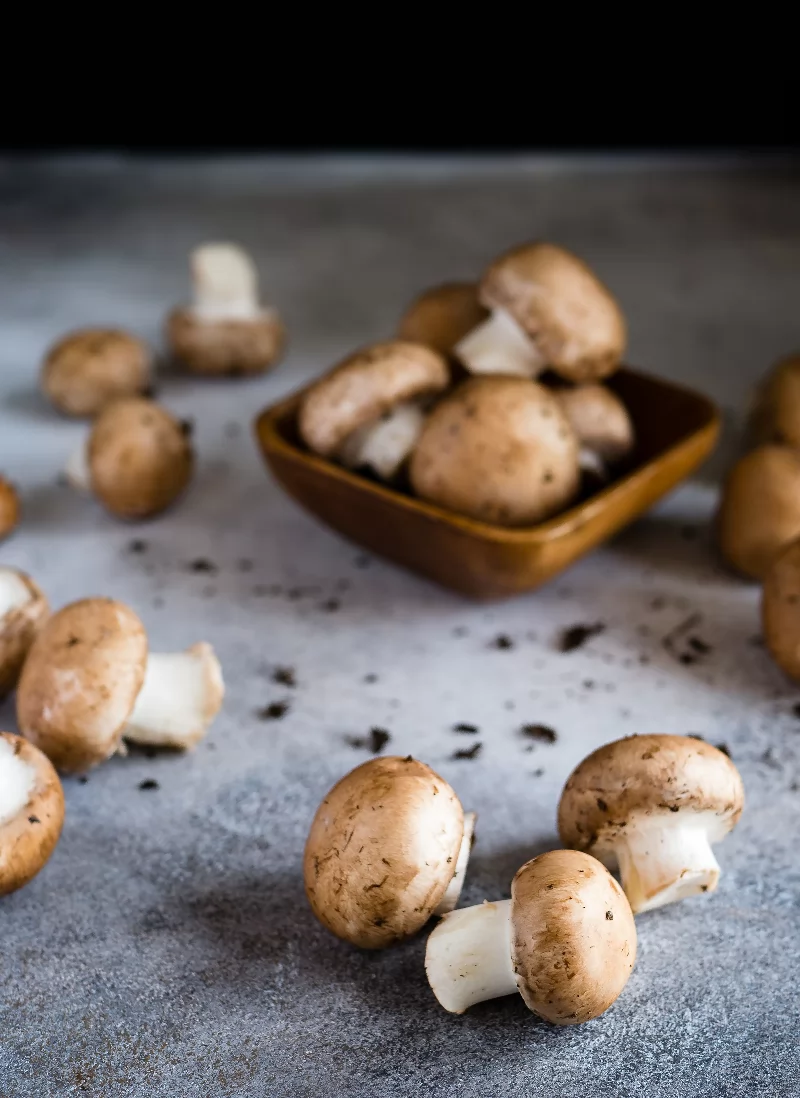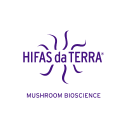Resumen
The global mushroom market has been experiencing a growing demand, with China maintaining its dominant position as the leading producer with 41.1 million tons in 2021. In Europe, Poland is the largest producer, contributing significantly to a stable production level of around 1,080,000 tons per year. Spain, as one of the leading European producers and exporters, a slight dip from 2020's record of 69.4 million kg. The Spanish market's turnover from mushroom sales reached 272 million euros in 2021. Truffles have also found their spotlight in Spain, with the country becoming the top global producer in recent times, estimated to produce 100 tons in 2022, mainly destined for exports due to limited domestic demand. The mushroom production in Spain is primarily located in Castilla-La Mancha and La Rioja, with supermarkets being the major distribution channel, accounting for 44.9% of fresh mushroom sales in 2021. Meanwhile, Spanish truffle prices exhibit volatility, yet the Spanish truffle still has a lower average price than the French truffle on the market.
Rising Demand for Varied Mushrooms in the Spanish Market
The Spanish market has witnessed an upswing in the consumption of mushrooms, signaling a promising outlook for growth. This market, characterized by a preference for button mushrooms, has seen a gradual shift toward an increased appetite for other varieties like Shiitake, which is rapidly gaining popularity. Within Spain, annual mushroom consumption has seen an appreciable increase, with households consuming between 60 and 70 million kg of fresh mushrooms, although there was a slight drop from the record year 2020. The per capita consumption also reflects this rise, with each Spaniard consuming approximately 1.4 kg of fresh mushrooms annually and spending close to 6 euros on them. Button mushrooms, also known as white mushrooms, are the most cultivated and consumed variety both globally and within Spain. In the broader European context, Spain stands as one of the leading producers and exporters, accounting for about 10% of Europe's mushroom production. The Neofungi group emerges as a significant player in the national button mushroom production while groups like Ayecue (Riberebro) lead in organic mushroom offerings.
The Spanish market seems to be embracing a healthy eating trend, as evidenced by the growing demand for mushrooms owing to their numerous benefits. National production is strongly supported by domestic giants, but there is also a push for innovation and diversification of product offerings within the market. Despite the overall growth, the demand for truffles, another coveted fungi variety, remains comparatively weaker domestically, prompting a substantial portion, between 80 and 90%, to be directed towards exports, with France being the principal market. Considering consumption patterns, Spaniards show a clear preference for fresh mushrooms, which constitute about 65% of their consumption, as opposed to frozen or prepared mushrooms. The trend is reinforced by the fact that mushrooms rank as the 7th most consumed type of fresh vegetables in Spain, making up about 2% of all vegetable consumption, trailing significantly behind fruits and potatoes. In conclusion, the Spanish mushroom market, while traditionally leaning towards white mushrooms, is evolving with a burgeoning demand for a diverse range of mushroom types. The increased domestic consumption, export potential, and consumer health consciousness suggest that mushrooms will remain a significant and growing component of Spanish gastronomy and agricultural production.
Key Players in the Spanish Mushroom and Truffle Market
The Spanish mushroom and truffle industry is a vibrant sector with several pivotal companies steering production, innovation, and distribution across the domestic and international markets. The success and growth of the market can be attributed to these entities' diverse approaches, which range from traditional cultivation to advanced processing and novel product development.
- Champinter is one of the mainstays in mushroom production, leading the way with its cultivation expertise and significant contribution to the mushroom supply. Known for their quality produce and substantial impact on the market, they are representative of Spanish excellence in mushroom farming.
- Neofungi is another giant in the field, primarily dominating the button mushroom production. Their mastery in cultivation and distribution throughout the region has positioned them as a trusted supplier to retailers and customers seeking fresh and high-quality mushrooms.
- When it comes to the revered truffle, Arotz stands out. Specializing in this luxurious delicacy, Arotz has positioned itself as a key player in truffle production, navigating the nuances of a market where product quality and provenance are paramount.
- In the realm of frozen mushrooms, a category gaining popularity due to convenience and shelf-stability, **Congalsa** has carved out a notable space. The company’s focus on frozen foodstuffs allows it to deliver mushrooms in a format that appeals to both the retail and culinary industry.
- On the distribution side, Mercadona looms large over the Spanish market. As one of the leading supermarkets, it serves as a major channel through which a significant amount of mushroom and truffle products reach consumers, influencing purchasing trends and consumer preferences.
- Frutas E. Sánchez is a noteworthy name in the specialized establishment sector. They play a critical role in providing a more curated selection of mushrooms and truffle products to discerning customers who are looking for something beyond the conventional offerings found in larger chain stores.
- For those seeking premium mushrooms, Laumont is a purveyor of high-end mushroom varieties. Their dedication to exceptional quality and gourmet selections positions them as the go-to for luxury mushrooms, catering to a niche yet valuable segment of the market.
- Lastly, Hifas da Terra represents the forefront of innovation within the mushroom industry. Their focus on health and therapeutic properties of various mushroom species brings a unique perspective to the market, exploring the intersection between gastronomy and wellness.
à la compréhension de ce marché
Contenido detallado
 Información
Información
- Número de páginas : 30 páginas
- Formato : Versión digital y PDF
- Última actualización : 05/05/2023
 Resumen y extractos
Resumen y extractos
1 Market overview
1.1 Definition and scope of the study
There are many varieties of mushrooms, but the most cultivated species in the world are among the following:
- Button mushroom (also called white mushroom in the Spanish market) occupies the first place: it is the most cultivated variety in the world by far. China accounts for more than 50% of the world production;
- Shiitake, from Asia, is the second most produced variety in the world;
- The oyster mushroom occupies the third place in this ranking;
Although Spanish consumption of mushrooms is still well below that of many European countries, there is a definite upward trend in this consumption. The Spanish mushroom market thus offers very promising prospects for growth. although the white mushroom is still the most represented on the Spanish market, its consumption is growing less rapidly than other types of mushrooms such as Shiitake, which is gaining in popularity.
The Spanish mushroom market is supported by a few national production giants, such as the Neofungi group, which is strongly dominant in the national production of button mushrooms. Other groups are asserting more innovative positions, such as the Ayecue group (Riberebro), which markets the first range of organic mushrooms under the Riofresh brand. [FreshPlaza]
1.2 A stable world market dominated by China
The many health benefits of mushrooms are driving a growing worldwide demand. Especially in Asia Pacific, which dominates the market with an extremely high demand for mushrooms from Japan, China and even India.
North America and Europe have significant markets for the sale of exotic mushrooms, both in terms of imports ...
1.3 The European market dominated by Poland
In Europe, the production of mushrooms has remained fairly stable over the last few years, at around *,***,*** tons per year. A distinction is made between fresh and processed mush rooms (***). The desired shelf life, the clientele and the transport time determine the fate of the mushroom production.
European mushroom production Europe, ...
1.4 The Spanish market
Mushroom market:
In ****, the sale of mushrooms in Spain amounted to *** million euros in ****, up **.* million euros compared to ****, but down from ****, which was a record year, with more than *** million euros of mushrooms sold.
Turnover of mushroom sales Spain, ****-****, in millions of euros Source: ****
Note that this turnover is ...
1.5 Foreign trade
The UN HS nomenclature includes mushrooms and truffles prepared and preserved in ways other than with acids or vinegar.
Spain appears as a competitive producer of this product category. In the period **** to ****, it has a trade surplus. Between **** and ****, this surplus has increased by **.**% to reach the value of **,*** million ...
2 Analysis of the demand
2.1 A strong demand for mushrooms in Spain
Evolution of consumption:
In recent years, the consumption of mushrooms by Spanish households has been increasing. In total, **.* million kg of fresh mushrooms were consumed in the Spanish territory, down from the record year **** (***), but up from ****.
Evolution of mushroom consumption Spain, ****-****, in million kg Source: ****
As a result, the ...
2.2 The case of truffles: domestic demand is still weak
The demand for truffles in Spain is still quite limited because this ingredient is not yet part of the culinary traditions of the country, and has not been as much integrated into the gastronomic culture as in other neighboring countries such as France or Italy.
The following graph highlights the interest ...
2.3 Shiitake, a new trend?
Unknown in the European and Spanish markets until a few years ago, even though it is the second most consumed mushroom in the world (***), Shiitake is gradually making its appearance in food supplements and in several products.a trend that is confirmed as more and more Spaniards are interested in so-called ...
2.4 Alternative uses of mushrooms: mycotherapy or fungotherapy
Fungal therapy is a form of alternative medicine derived from traditional Chinese medicine and relies on the use of certain types of fungi to treat and prevent disease. Fungal therapy is also used in other traditional Eastern medicines such as Ayurveda. The kingdom of mushrooms - or fungi, if you prefer ...
2.5 Web analysis of demand: interest and seasonality
Interest and seasonality:
Evolution of interest in the search "setas" Spain, ****-****, Google Trends Index Source: ****
The interest in mushroom demand indicated by the Google Trends tool is rather stable in recent years, even slightly increasing. In addition, there is a clear seasonality, with a strong increase in interest at the ...
3 Market structure
3.1 A diversity of production methods
The diversity is once again felt in the production methods. Indeed, it goes without saying that each species of mushroom has its own method.
The mushroom has * different methods of cultivation following the technical developments (***). Nowadays, the cultivation in trays is the most widespread but all of them follow the following ...
3.2 Mushroom processing plants
It is difficult to know what market share these factories have in Spain, but it is certain that they are indispensable in the processing and storage of mushrooms.
These factories are the link between producers and distributors. They get fresh mushrooms from different producers and diversify the methods and forms of ...
3.3 Different preservation methods
Source: ****
3.4 Mushroom production and distribution
Mushroom production by region:
The area devoted to mushroom cultivation in the **** campaign amounted to **,*** hectares and the production obtained was around ***,*** tons, according to data from the Ministry of Agriculture.
The production is spread over * autonomous communities, including the Canary Islands and the Balearic Islands, but is mainly concentrated in ...
3.5 Focus on truffle production in Spain
Truffle cultivation:
Truffles can be found naturally in forests, but they have also been cultivated since the **th century. The boom in truffle cultivation in Spain occurred in the **th century, much later than in France or Italy. They must be planted near the roots of a tree (***), and start producing ...
4 Analysis of the offer
4.1 The main species of mushrooms
There are hundreds of thousands of species of mushrooms in the world, the most popular cultivated varieties are (***)
Mushrooms or Prataiolo (***), also known as Portobello, characterized by its hazelnut-colored cap, is the most suitable for risottos, but it is also delicious breaded. The oyster mushroom (***) has a characteristic shape, which is ...
4.2 Mushroom prices
Overall mushroom price:
Evolution of the average price of mushrooms Spain, ****-****, in euros Source: ****
In ****, the average price of mushrooms in Spain was *.** euros per kg, an increase of *% compared to **** and *.*% compared to ****.
Prices by type of mushroom:
The prices in the table below are those taken from Mercadona ...
4.3 Spanish Truffle Awards
The historical data of Spanish truffle prices in Spain show the high volatility of its price. Indeed, at the beginning of the period studied, the price per kilogram was between **€ and ***€ .
Here is an overview of the Spanish truffle price during the year ****-****. The data below correspond to the average ...
5 Regulation
5.1 Marketing standards and regulations
As vegetables often processed or frozen, the mushroom in its forms must comply with a number of standards.
The international food standards for fruits and vegetables are listed in this book:[***].
The European Union standards for cultivated mushrooms are available in this document [***]
The UN and EEC standards:[***]
In general ...
5.2 Evolution of the Spanish legislation
Until ****, the sale of mushrooms for consumption in Spain was governed by a legal framework established in ****, the Spanish Food Code, which established a list of edible and poisonous species, complemented by commercial quality standards for mushrooms, truffles and ceps. In recent years, the general interest in collecting and consuming wild ...
5.3 UN Comtrade product identification codes
****** Vegetables; mushrooms fresh or chilled.
****** Vegetables; mushrooms of the genus Agaricus whole cut sliced broken or in powder but not further prepared dried.
****** Vegetables; mushrooms of the genus Agaricus provisonally preserved but unsuitable in that state for immediate consumption.
****** Vegetables; mushrooms other than of the genus Agaricus and ...
6 Positioning of the actors
6.1 Segmentation of actors
- Riberebro
- Arotz
- Mercadona
- Congalsa
- Champinter
- Neofungi
- Laumont
- Frutas E. Sánchez
- Hifas da Terra
- Hifas da Terra
 Lista de gráficos
Lista de gráficos
- Principales países productores de setas después de China
- Producción europea de setas
- Cifras clave de la producción de trufa en España
- Facturación por venta de setas
- Las diferentes formas de comer setas
Todos nuestros estudios están disponibles en línea en formato PDF
Eche un vistazo a un ejemplo de nuestro estudio sobre otro mercado.
Empresas citadas en este estudio
Este estudio contiene una visión completa de las empresas del mercado, con las últimas cifras y noticias de cada empresa :
 Elegir este estudio significa :
Elegir este estudio significa :
Acceso a más de 35 horas de trabajo
Nuestros estudios son el resultado de más de 35 horas de investigación y análisis. Utilizar nuestros estudios le permite dedicar más tiempo y valor añadido a sus proyectos.
Benefíciese de 6 años de experiencia y más de 1.500 estudios sectoriales ya elaborados
Nuestra experiencia nos permite elaborar estudios completos en todos los sectores, incluidos los nichos y los mercados emergentes.
Nuestros conocimientos y metodología nos permiten elaborar estudios con una relación calidad-precio única.
Acceso a varios miles de artículos y datos de pago
Businesscoot tiene acceso a toda la prensa económica de pago, así como a bases de datos exclusivas para realizar sus estudios de mercado (más de 30.000 artículos y fuentes privadas)
Para mejorar nuestras investigaciones, nuestros analistas también utilizan indicadores web (semrush, trends, etc.) para identificar las tendencias del mercado y las estrategias de las empresas. (Consulte nuestras fuentes de pago)
Soporte garantizado después de su compra
Un equipo dedicado al servicio posventa, para garantizarle un alto nivel de satisfacción. (+33) 9 70 46 55 00
Un formato digital pensado para nuestros usuarios
No sólo tiene acceso a un PDF, sino también a una versión digital diseñada para nuestros clientes. Esta versión le permite acceder a las fuentes, a los datos en formato Excel y a los gráficos. De este modo, podrá recuperar fácilmente el contenido del estudio y adaptarlo a sus medios.
 Nuestras ofertas :
Nuestras ofertas :
the mushroom market | Spain
- ¿Cuáles son las cifras sobre el tamaño y el crecimiento del mercado?
- ¿Qué está impulsando el crecimiento del mercado y su evolución?
- ¿Cuál es el posicionamiento de las empresas en la cadena de valor?
- ¿En qué se diferencian las empresas del mercado?
- Datos procedentes de varias docenas de bases de datos
Pacote de 5 estudios (-15%) ES Spain
- 5 informes a 75,6 euros sin IVA por estudio a elegir de nuestro catálogo español durante 12 meses
- Ahorre un 15% en la compra de estudios adicionales
- Opte por la devolución del crédito no utilizado al final del periodo de 12 meses (duración del pack)
Consulte las condiciones del pack y el reembolso del crédito no utilizado.

























